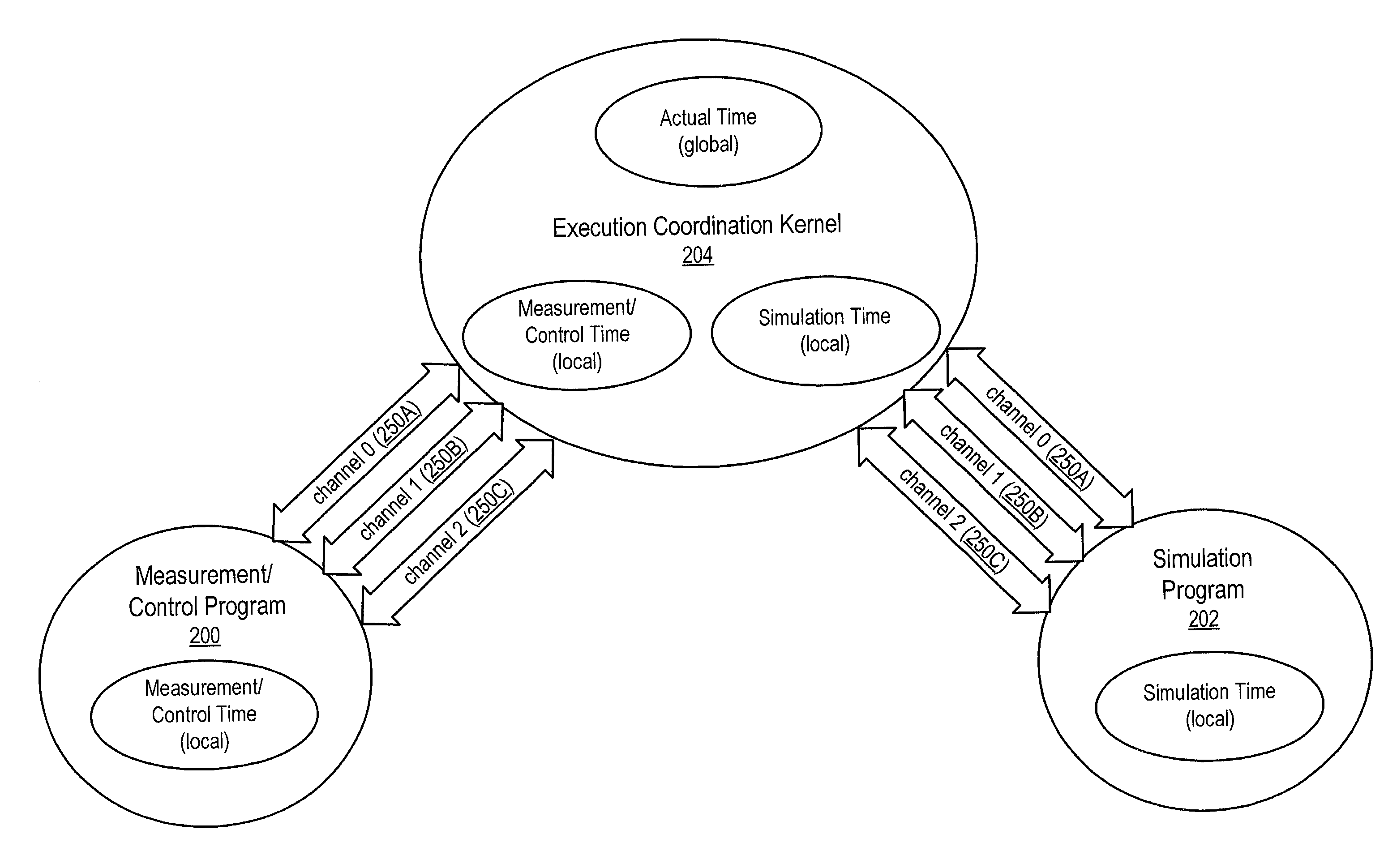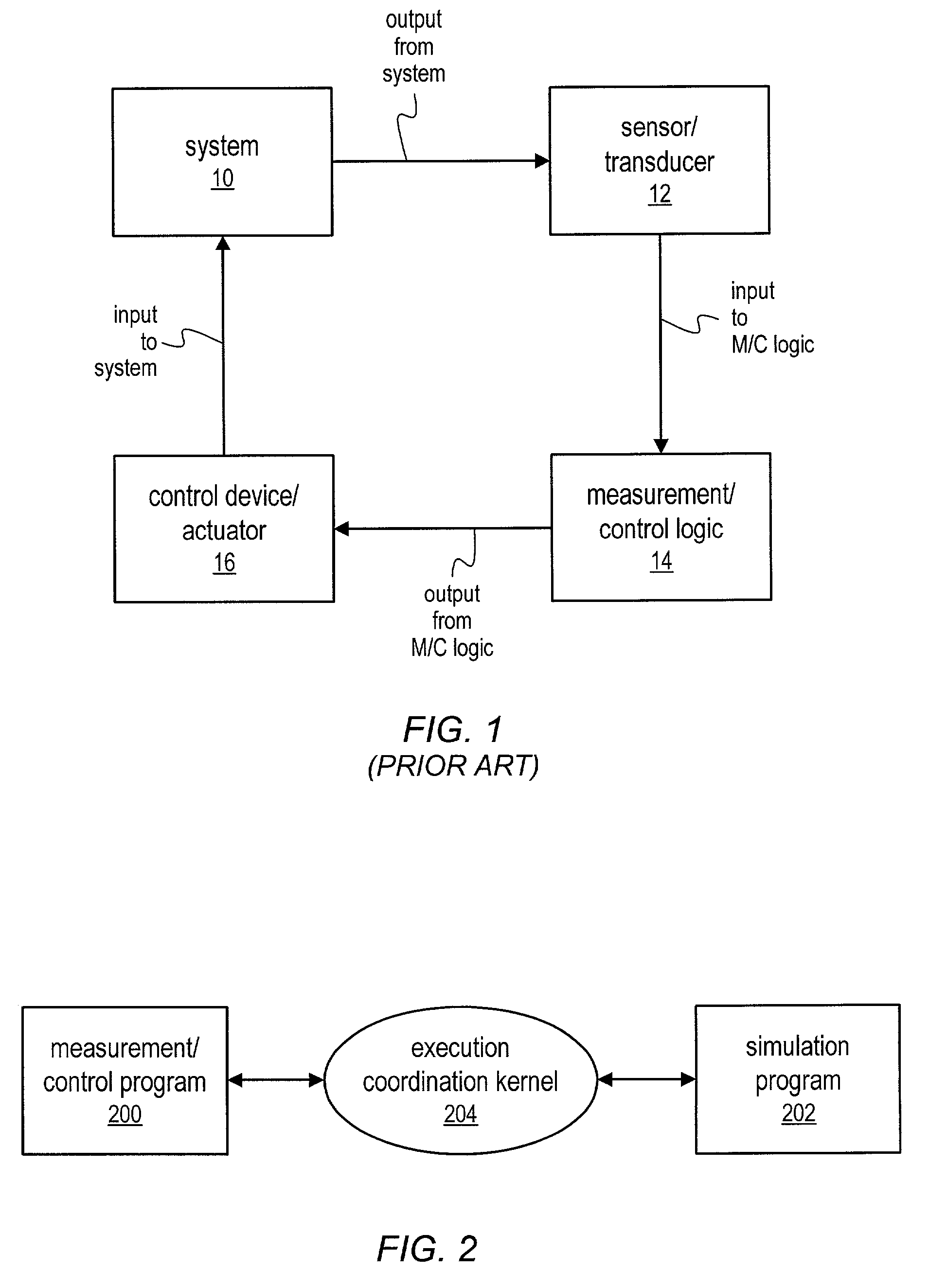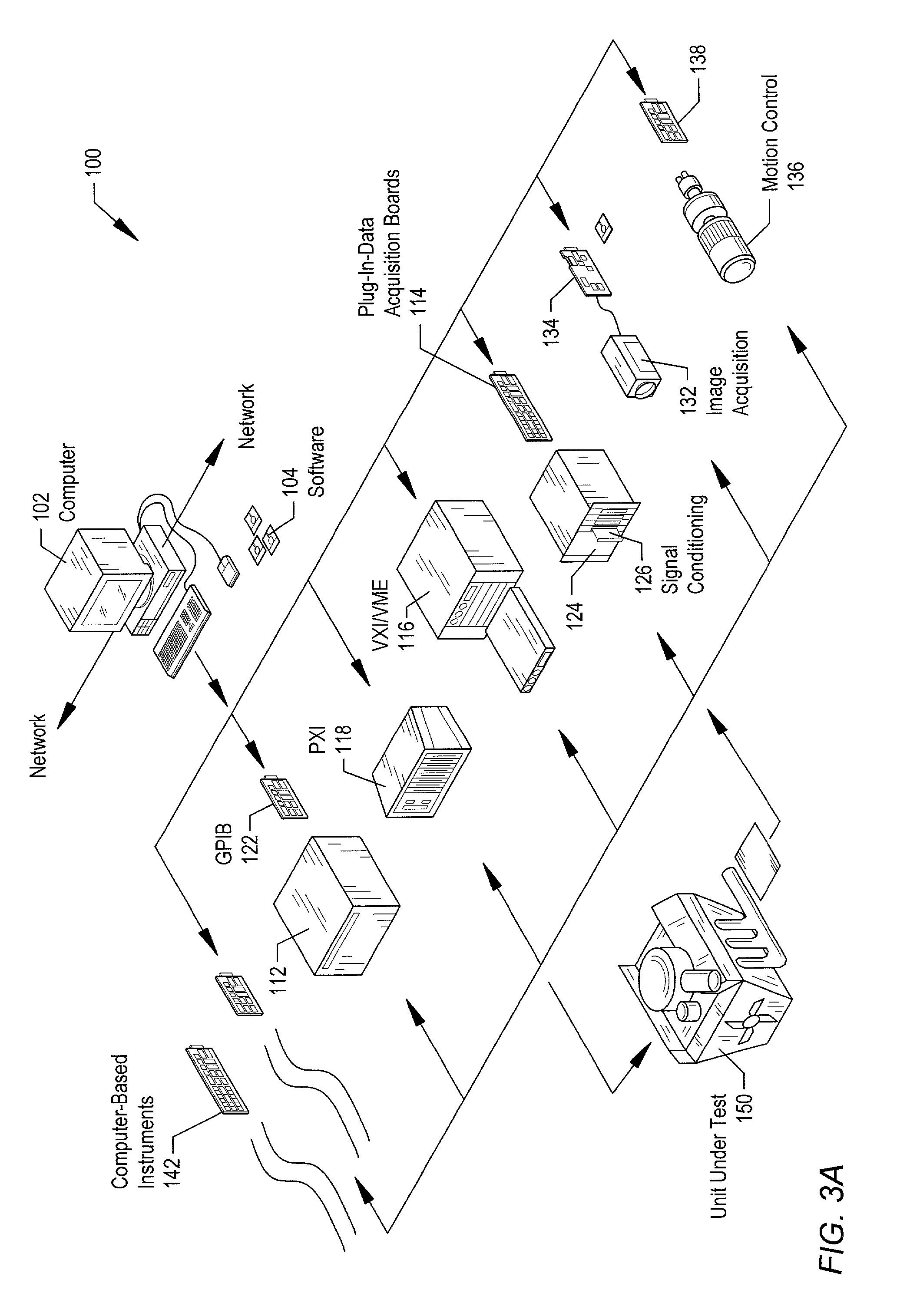Simulation, measurement and/or control system and method with coordinated timing
a control system and simulation technology, applied in the direction of process and machine control, instruments, analogue processes for specific applications, etc., can solve the problems of dangerous or economically infeasible, inability to perform or monitor a test, and inability to achieve real system operation
- Summary
- Abstract
- Description
- Claims
- Application Information
AI Technical Summary
Benefits of technology
Problems solved by technology
Method used
Image
Examples
Embodiment Construction
FIG. 2—Exemplary System
[0036]FIG. 2 is a block diagram of a system comprising a measurement / control program 200, a simulation program 202, and an execution coordination kernel 204. The system shown in FIG. 2 may enable the creation of a measurement / control loop in which the measurement / control program 200 interacts with a simulated system, i.e., the simulation program 202, instead of with a real system. The execution coordination kernel 204 is responsible for coordinating the execution and time advancement of the measurement / control and simulation programs, as described below.
[0037]As used herein, the term “measurement / control program” may refer to any of various types of programs that implement measurement / control logic for a measurement / control loop, such as shown in FIG. 1. A measurement / control program 200 may perform any combination of measurement and / or control of a system or a simulated system, as well as other types of tasks. The program 200 may run in any of various types o...
PUM
 Login to View More
Login to View More Abstract
Description
Claims
Application Information
 Login to View More
Login to View More - R&D
- Intellectual Property
- Life Sciences
- Materials
- Tech Scout
- Unparalleled Data Quality
- Higher Quality Content
- 60% Fewer Hallucinations
Browse by: Latest US Patents, China's latest patents, Technical Efficacy Thesaurus, Application Domain, Technology Topic, Popular Technical Reports.
© 2025 PatSnap. All rights reserved.Legal|Privacy policy|Modern Slavery Act Transparency Statement|Sitemap|About US| Contact US: help@patsnap.com



